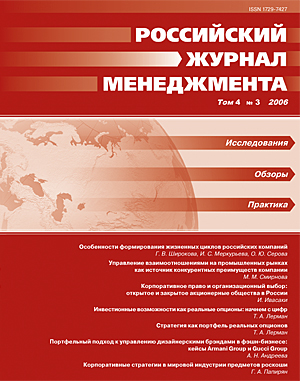Corporate Law and Organizational Choice: Open versus Closed Joint-Stock Companies in Russia
Abstract
The vast majority of Russian corporations, including many manufacturing and communications firms, are still compelled to become closed joint-stock companies (JSCs) that lack a modern mechanism in order to attract capital from a wide range of private investors. Using the results of a Japan-Russia joint enterprise survey conducted in 2005, we examine a variety of factors as to why Russian stock companies select to become closed companies. Our empirical results suggest the following four factors encouraging many of Russian firms to be closed JSCs: (a) a widespread insider-dominating corporate ownership structure emerging as a result of the mass-privatization policy; (b) a strong orientation among managers toward closed corporate organization due to the underdeveloped capital and managerial markets; (c) slumping needs for corporate finance; and (d) insufficient financial support from local financial institutions.
Downloads
References
Downloads
Published
How to Cite
Issue
Section
License
Articles of the Russian Management Journal are open access distributed under the terms of the License Agreement with Saint Petersburg State University, which permits to the authors unrestricted distribution and self-archiving free of charge.





